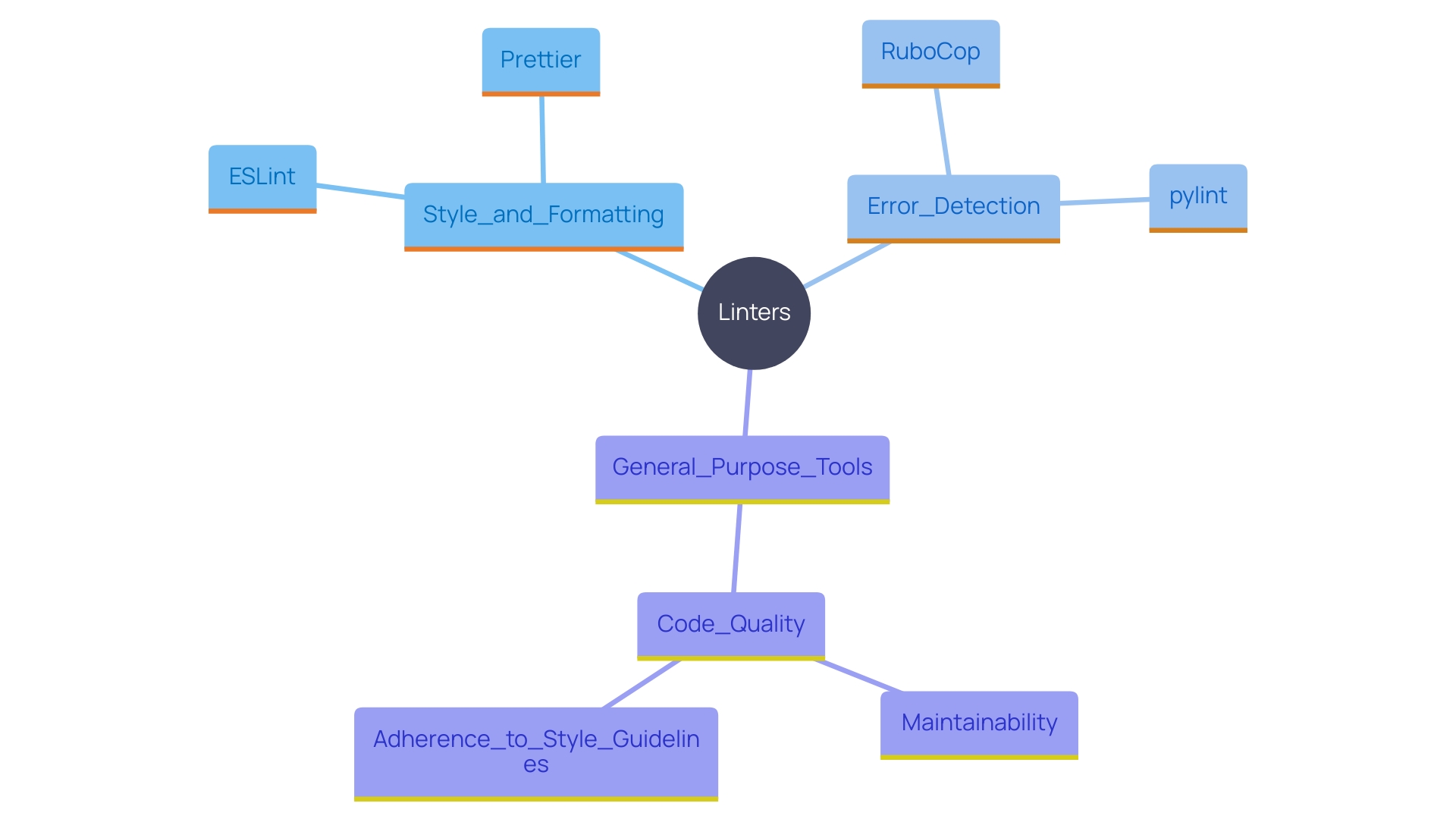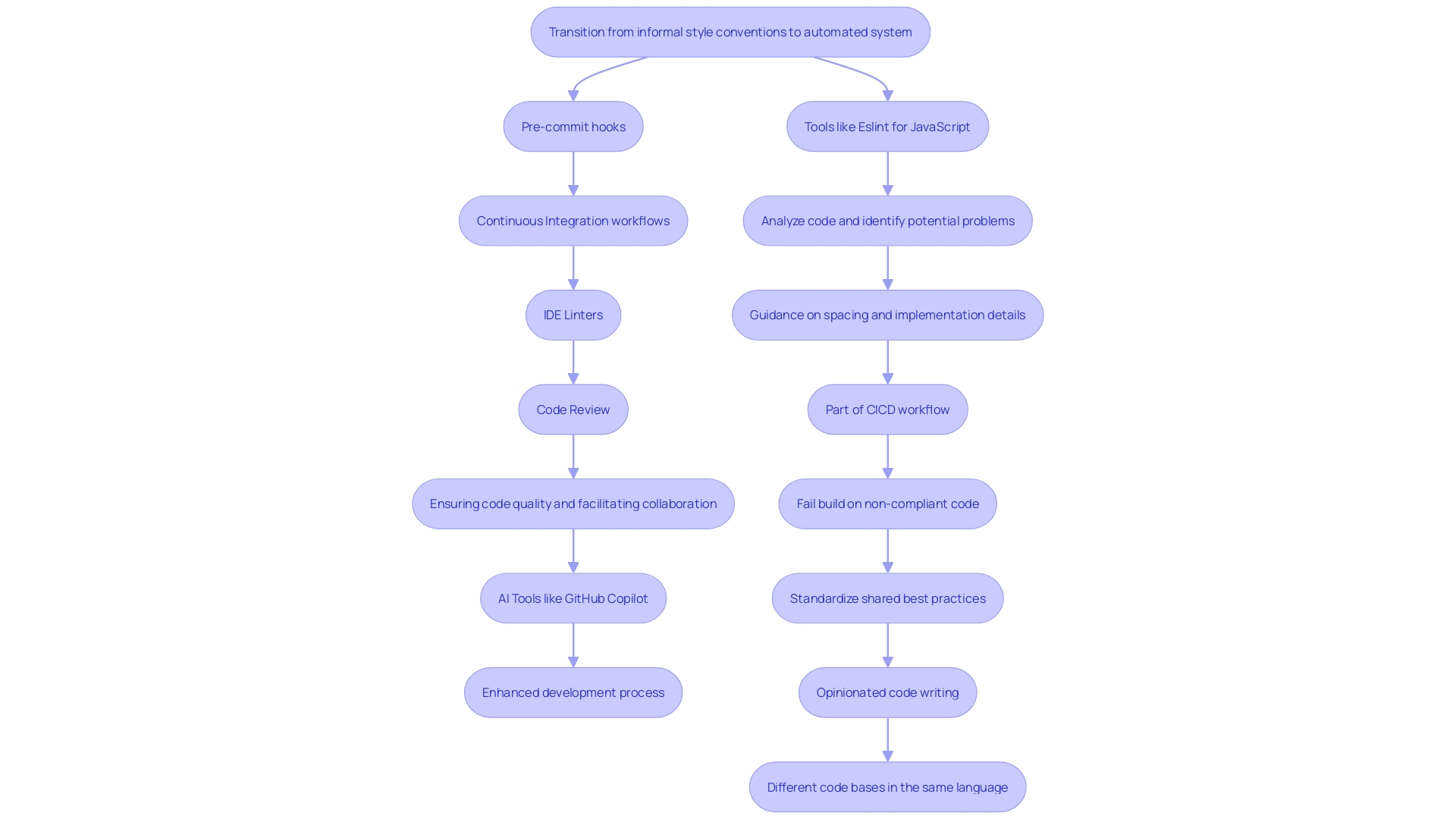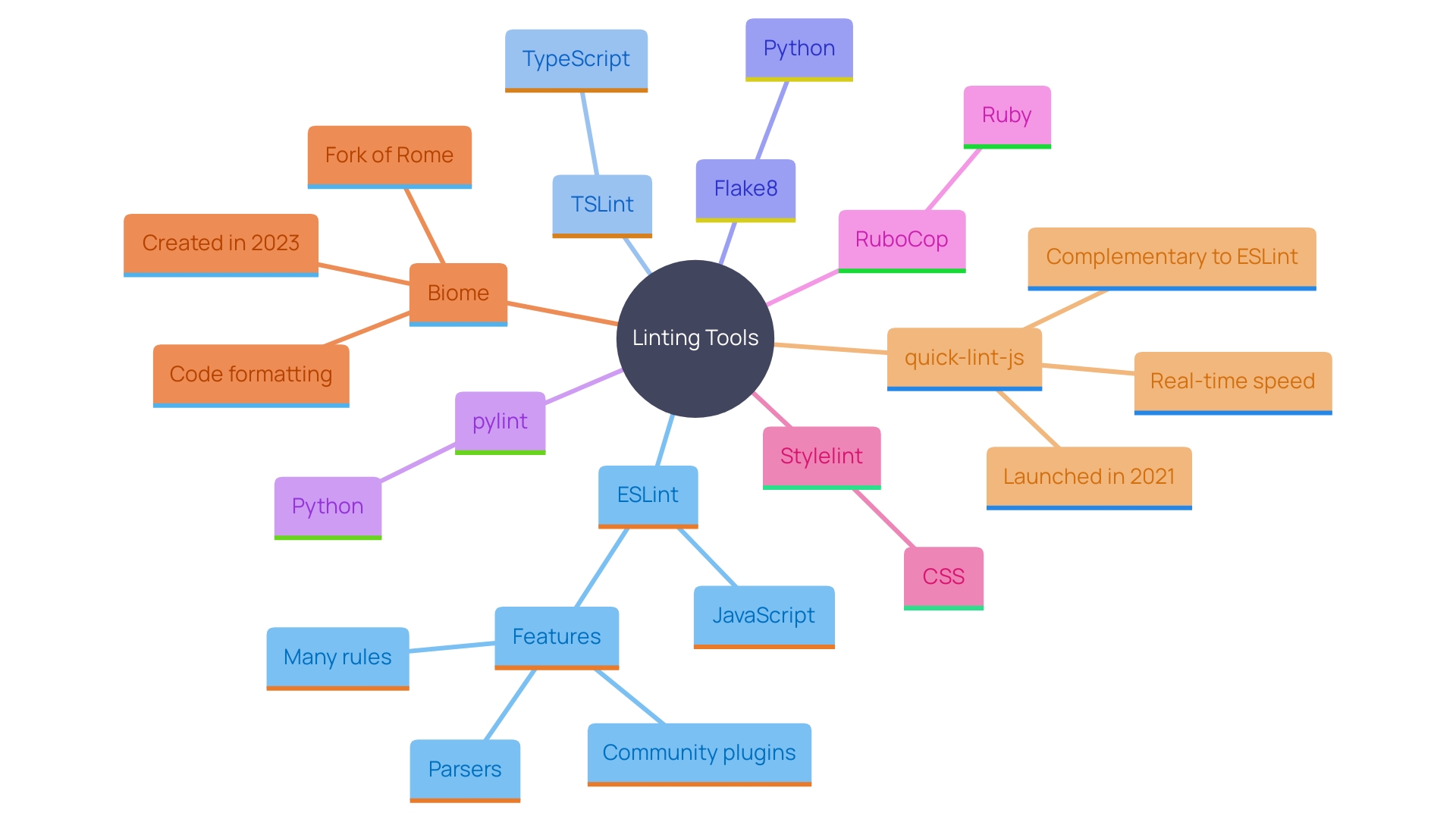Introduction
In the ever-evolving world of software development, maintaining high code quality and consistency is paramount. Linting, a static code analysis process, has become an indispensable tool for developers striving to achieve this goal. By meticulously scanning source code to uncover errors, bugs, and stylistic inconsistencies, linting ensures that code remains clean, maintainable, and performant.
This article delves into the nuances of linting, exploring its definition, benefits, types, and best practices. Additionally, it discusses the integration of linters into development workflows, highlights common tools and techniques, and addresses the challenges and limitations faced by developers. Discover how leveraging linters can significantly enhance productivity, enforce coding standards, and mitigate security risks, ultimately leading to robust and reliable software.
What is Linting?
Linting is a static analysis procedure that meticulously scans source material to uncover programming errors, bugs, stylistic inconsistencies, and suspicious constructs without executing the program. This proactive approach ensures developers maintain high standards of quality and readability, which is crucial for the maintainability and performance of software. Originating from a Unix utility designed for C language, modern analysis tools now support a broad spectrum of languages and codebases. Their integration into development environments offers real-time feedback, significantly enhancing the coding process. For instance, tools like ESLint and Prettier not only identify errors but also promote a uniform coding style, which is vital in team settings. M&T Bank, a prominent U.S. commercial institution, emphasizes the significance of clean programming standards to enhance software maintainability and performance, particularly considering the strict regulatory requirements and the high stakes of digital transformation in the banking sector. By utilizing code analysis tools, organizations can avoid costly, time-consuming problems and reduce risks related to security breaches, financial losses, and reputational harm.
Benefits of Using Linters
Utilizing code analysis tools provides numerous advantages, such as enhanced code quality, consistency, and maintainability. Linters are invaluable for catching common mistakes early, reducing the time spent on debugging, and boosting overall productivity. They ensure coding standards are enforced across teams, which is crucial for collaboration and maintaining a uniform codebase. Additionally, code analysis tools can aid in identifying potential security vulnerabilities, making the codebase safer and more robust.
Recent advancements, such as integrating large language models, are making code analysis tools more versatile and efficient. For instance, a study conducted by researchers collected a vast dataset of code snippets and associated issues, training classifiers to detect and identify different types of problems. This approach aims to create a language-independent tool for code analysis that is both comprehensive and fast, addressing the limitations of traditional tools.
The significance of code quality tools is further emphasized by the findings from various studies. In one lab study with 28 participants, developers were tasked with validating and repairing AI-generated scripts, revealing that tools for checking syntax significantly enhance performance and reduce cognitive workload when developers are aware of the scripts' provenance.
Furthermore, the practice of software development, particularly with the emergence of AI tools such as GitHub Copilot, has demonstrated that quality checkers are vital for preserving high programming standards. As AI-generated programming becomes more common, tools assist in managing and refining these suggestions, ensuring that the resulting software is trustworthy and safe.
Data from the Coverity Scan Report emphasize the efficiency of static analysis tools, indicating defect densities assessed across millions of lines of source. These tools not only detect defects but also provide clear explanations for their root causes, making it easier for developers to fix issues efficiently.
Overall, static analysis tools play a crucial role in modern software development by improving quality, enforcing standards, and enhancing security, making them indispensable for any development team.
Types of Linters
Linters come in various types, each designed to cater to specific functionalities and programming languages. Style and formatting linters, such as ESLint for JavaScript or Prettier, ensure that code adheres to consistent style guidelines. These tools are highly configurable; for instance, ESLint's latest versions utilize the spread operator for extending configurations, simplifying the process of modifying or adding new guidelines. This gradual approach ensures that new and modified files in each pull request adhere to updated linter rules without the immediate need to overhaul the entire project.
On the other hand, error detection and code quality tools such as RuboCop for Ruby or pylint for Python focus on identifying potential issues and enhancing code quality. These tools are crucial for maintaining the correctness and reliability of codebases. They not only capture unused variables and overcomplicated expressions but also promote maintainability and performance efficiency.
General-purpose tools, capable of analyzing multiple languages and frameworks, provide broad utility across diverse projects. These tools often incorporate CLI options, such as the --config flag, allowing users to specify configurations explicitly, thus offering flexibility in linting processes. As linters and their guidelines evolve, maintaining configurations current ensures that codebases benefit from the latest best practices and new language features, ultimately enhancing code quality and development productivity.

Best Practices for Linting
Adopting best practices for linting can elevate the quality and consistency of your codebase. Start by selecting a linter that is tailored to your project's language and requirements. Setting up the linter with guidelines that match your team's coding standards is essential, making sure everyone on the team utilizes the same configuration. Regularly review and update lighting rules to accommodate changes in the codebase or team preferences. Incorporating lighting into the development workflow, such as during review sessions and continuous integration processes, enforces standards consistently.
Linters analyze your project and call out potential issues, offering guidance on everything from spacing to specific implementation details. By incorporating them into your CI/CD workflow, you can ensure that non-compliant software is caught early, preventing it from being merged. This approach standardizes best practices across the team, promoting uniformity in code quality.
Many developers mistakenly perceive configuring a linter as a one-time task, often done at the start of a project. However, linters and their guidelines evolve, just like other tools and libraries. For instance, outdated projects often face challenges due to obsolete linter rules. Regular updates are necessary to keep the codebase modern and maintainable. Linters serve not only as instruments for consistency and early error detection but also as educational resources for new contributors, guiding them to write improved programs.
The term "linting" comes from a Unix utility named lint, developed in 1978 to identify questionable constructs in C language source. The term "lint" was motivated by minor, frequently ignored mistakes in programming, akin to the tiny pieces of fluff or fiber located in garments. By enforcing best practices and programming standards, linting enhances the overall quality of the software, making it more robust and easier to maintain. Consistency is vital, particularly in open source projects where numerous contributors collaborate on the same codebase, enhancing the readability and uniformity of the work.

Integrating Linters into Development Workflow
Incorporating style checkers into the development process is essential for preserving high programming standards and promoting collaboration. By setting up automated tools to function during different phases of development, like pre-commit hooks or continuous integration workflows, programmers guarantee that the scripts are checked prior to being combined or released, effectively stopping issues from arriving in production. This method enables a gradual and secure implementation of linter guidelines, as new and altered files are examined during each pull request. Moreover, incorporating linters into IDEs offers real-time feedback, enabling developers to resolve issues as they work. This method not only standardizes best practices across the team but also simplifies the process of updating or adding new linter guidelines without the need to overhaul the entire project at once. As highlighted by Microsoft’s latest reports, the incorporation of AI tools like GitHub’s Copilot further enhances this process, underscoring the evolving nature of software development towards greater efficiency and collaboration.

Common Linting Tools and Techniques
ESLint and TSLint stand out as pivotal linting tools for JavaScript and TypeScript, respectively. ESLint, for instance, is driven by community recommendations and allows for auto-fixing issues using the --fix flag. It also supports custom rules, such as limiting the number of function parameters, enhancing program maintainability. Similarly, TSLint helps enforce best practices in TypeScript, catching potential bugs early on. Python developers frequently utilize Flake8 and pylint to uphold quality standards. These tools can be set up to adapt to the project requirements, ensuring the programming remains clean and efficient. For Ruby, RuboCop is a preferred choice, offering a comprehensive suite of rules that can be customized. 'In the realm of CSS, Stylelint provides a configuration-based method akin to ESLint, allowing programmers to identify problematic elements that might not function in older browsers.'. This ensures broader compatibility and maintains the visual integrity of web pages. By employing these linting tools, programmers can uphold consistent coding standards, detect errors early, and create more robust and maintainable codebases.

Challenges and Limitations of Linting
While linting provides significant advantages, it also presents certain challenges and limitations. One of the primary issues is the potential for false positives, where linters flag code that is syntactically correct but stylistically questionable. This can lead to frustration among programmers if not managed properly. A study on software developers’ productivity highlighted that workplace stressors and communication issues are significant factors contributing to “bad days” for developers, which can be exacerbated by false positives and overly stringent linting rules. Furthermore, the enforcement of excessive linting guidelines can create a cumbersome experience, potentially decreasing productivity. This is particularly evident in old projects where outdated linter rules and development platforms can hinder progress. A balanced approach is necessary; teams must enforce coding standards while allowing flexibility for developers to write code efficiently. The findings suggest that by addressing these issues, organizations can foster a more positive and productive work culture, ultimately leading to improved software quality and reduced burnout.
Conclusion
The exploration of linting reveals its critical role in enhancing code quality and maintaining consistency across software development projects. By utilizing static code analysis tools, developers can proactively identify errors, bugs, and stylistic inconsistencies, leading to cleaner, more maintainable code. The integration of linters into development workflows not only streamlines the coding process but also reinforces coding standards, which is essential for team collaboration and productivity.
The benefits of implementing linters are multifaceted, ranging from improved code quality and reduced debugging time to enhanced security measures. As advancements in technology introduce more sophisticated linting tools, such as those incorporating large language models, their effectiveness and versatility continue to expand. This evolution underscores the importance of regularly updating linting practices to adapt to changing project requirements and emerging coding standards.
However, it is essential to recognize the challenges associated with linting, including the risk of false positives and the potential for excessive rules to hinder productivity. Striking a balance between enforcing coding standards and allowing flexibility in coding practices can lead to a more positive development environment. By adopting best practices and integrating linters effectively into the development lifecycle, teams can significantly enhance their coding efficiency and deliver robust, reliable software solutions.
Frequently Asked Questions
What is linting?
Linting is a static analysis procedure that scans source code for programming errors, bugs, stylistic inconsistencies, and suspicious constructs without executing the program. It helps maintain high standards of quality and readability in software development.
Why is linting important?
Linting is crucial for ensuring software maintainability and performance. It promotes coding standards, enhances collaboration among teams, and helps identify potential security vulnerabilities, reducing the risk of costly errors and security breaches.
What are some examples of linting tools?
Popular linting tools include: ESLint for JavaScript, Prettier for code formatting, RuboCop for Ruby, pylint and Flake8 for Python, TSLint for TypeScript, and Stylelint for CSS.
How do linting tools work?
Linting tools analyze code for specific rules and guidelines, providing feedback on potential issues like unused variables or stylistic deviations. They can also enforce coding standards across teams to ensure consistency.
How can I incorporate linting into my development process?
To incorporate linting: Choose a linter that fits your project's language and requirements, set up the linter with guidelines that match your team's coding standards, regularly review and update linter rules, and integrate linting into your development workflow, such as during code reviews or continuous integration processes.
What are the benefits of using code analysis tools?
The benefits include enhanced code quality and consistency, early detection of common mistakes, improved maintainability and productivity, and identification of potential security vulnerabilities.
What challenges can arise from using linting tools?
Challenges include the potential for false positives, where the linter flags correct code that does not meet stylistic preferences. Excessive or outdated linting rules can also hinder productivity and create frustration among developers.
How do advancements in technology affect linting tools?
Recent advancements, such as the integration of large language models, are enhancing the versatility and efficiency of linting tools. These tools are becoming more comprehensive and fast, addressing limitations of traditional methods.
How can teams maintain effective linting practices?
Teams should adopt a balanced approach to linting, enforcing necessary standards while allowing flexibility. Regular updates to linter configurations and guidelines are essential to accommodate changes in projects and programming languages.
What is the historical origin of the term 'linting'?
The term 'linting' originates from a Unix utility called 'lint,' created in 1978, which identified questionable constructs in C language source code. The name 'lint' was inspired by the minor mistakes in programming, akin to the small fibers found in clothing.




